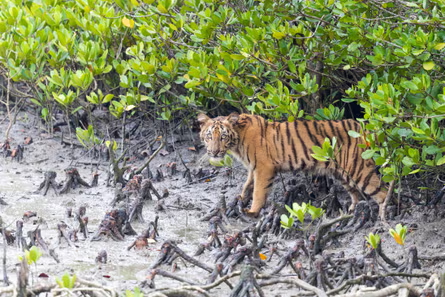According to the first-ever expert assessment of these crucial ecosystems and carbon stores, half of all the world’s mangrove forests are at risk of collapse.
According to the analysis by the International Union for Conservation of Nature (IUCN), human behaviour is the primary cause of their decline, with mangroves in southern India, Sri Lanka and the Maldives most at risk.
Systems in the South China Sea, central Pacific, and the eastern Coral Triangle around Malaysia, Papua New Guinea and the Philippines were classified as endangered.
Angela Andrade, who is the chair of the IUCN commission on ecosystem management, said: “Mangrove ecosystems are exceptional in their ability to provide essential services to people, including coastal disaster-risk reduction, carbon storage and sequestration, and support for fisheries. Their loss stands to be disastrous for nature and people across the globe.”
Found across the planet, mangroves include dozens of different species of trees and shrubs along tropical coastlines, which shelter a vast array of biodiversity. They act as nurseries for fish and support mammals as varied as tigers, African wild dogs and sloths.
The ecosystems store a disproportionate amount of carbon for their size, drawing in almost three times the carbon stored by tropical forests of the same size.
About 15% of the world’s coastlines are covered by mangroves, but the study found they are increasingly threatened by rising sea levels, agriculture, developments along coastlines, pollution such as oil spills, and the consequences of dam construction.
Story was adapted from the Guardian.
